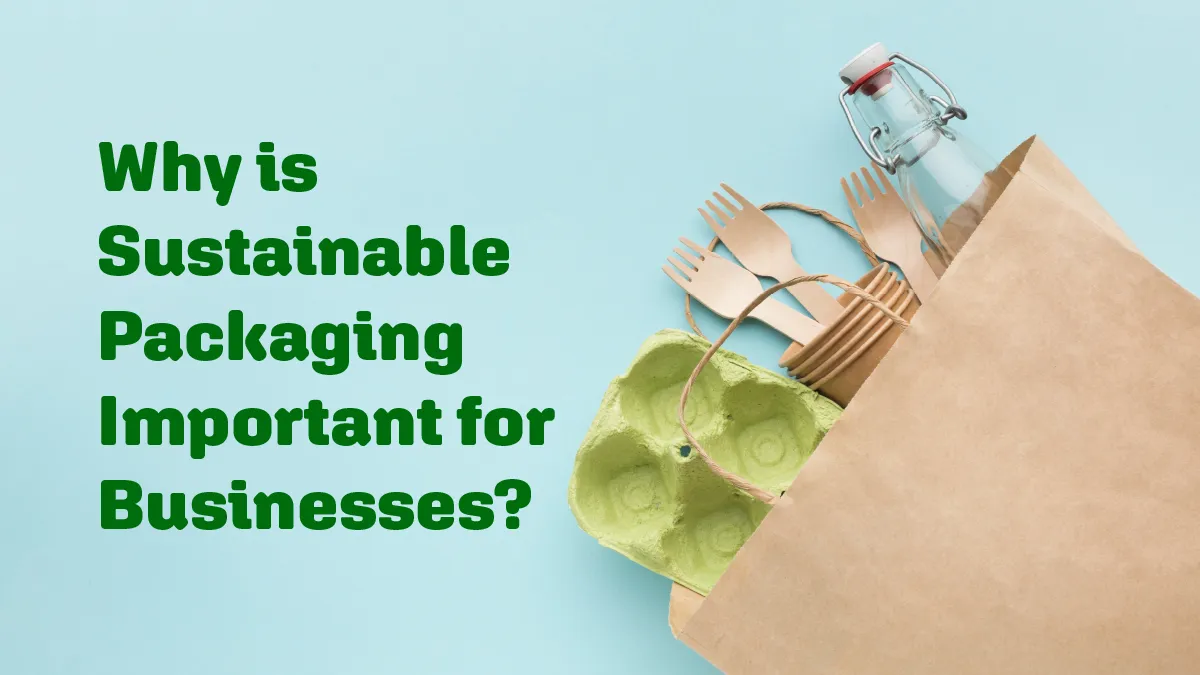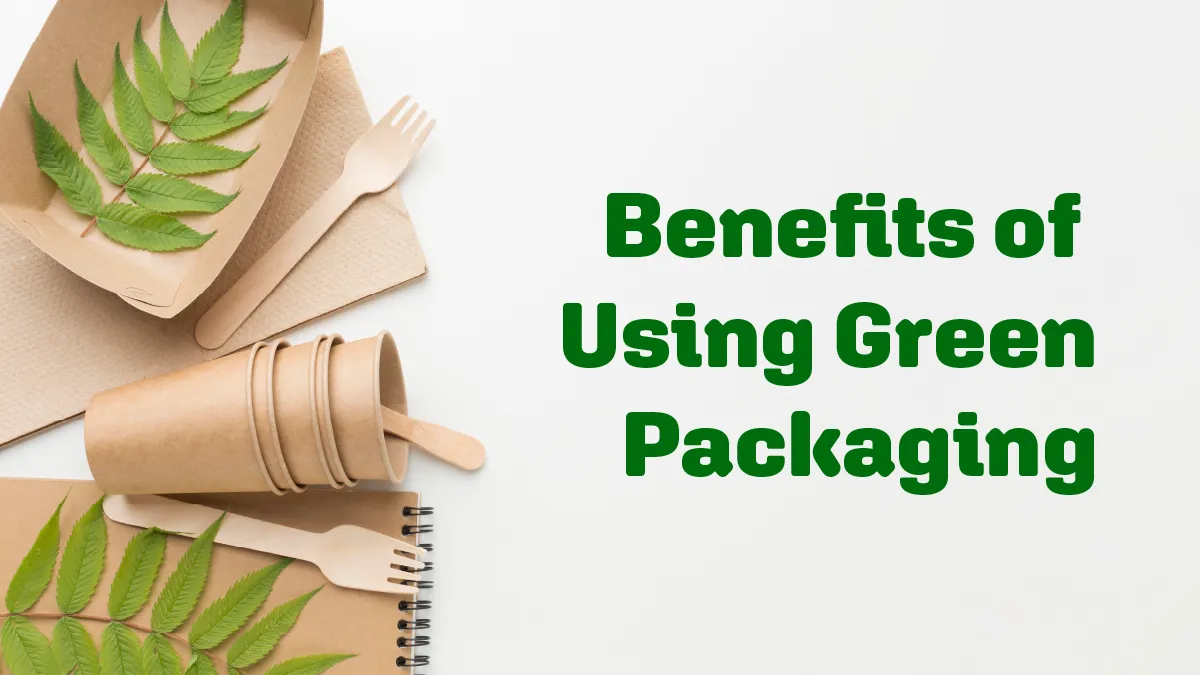Imagine getting a package and being hit with a mountain of waste—plastic, foam, boxes galore. It’s a familiar scene, and it’s happening billions of times every year. Enter green packaging, also known as sustainable or eco-friendly packaging, a powerful way to reduce the environmental toll of all that waste. Green packaging designs aim to lower their environmental impact. They use sustainable materials, like recyclable or biodegradable elements, and renewable energy in production.
Why should we care? Packaging waste makes up a huge chunk of landfill deposits—about a third of it, according to the EPA. As more people care about the environment, the shift to sustainable packaging isn’t just a trend; it’s a must. From small businesses to global retailers, green packaging can cut their carbon footprint and protect the planet. It’s a key way to meet rising consumer demand for a greener tomorrow.
What is Green Packaging?
Green packaging, or sustainable packaging, uses environmentally friendly materials and processes. It aims to reduce energy use and lessen packaging’s harmful environmental impact. Green packaging solutions often use biodegradable and recyclable materials, not plastic and Styrofoam. Also, green manufacturing techniques strive to reduce energy use and emissions.
Why is Sustainable Packaging Important for Businesses?

Businesses should use environmentally friendly or biodegradable packaging for two reasons. First, traditional packaging harms the global environment. Second, customers care about sustainability. Being seen as green is now vital to your brand’s popularity and your company’s success.
How product packaging impacts your business
Consumers increasingly want eco-friendly packaging, and many are willing to pay more for it. A 2020 study by Trivium Packaging found that 74% of respondents in the U.S., Europe, and South America supported paying more for eco-friendly packaging options. This trend has only grown since.
With nearly half of the customers now favoring sustainable brands, businesses recognize that green packaging can boost loyalty and their brand image. It is important to adopt sustainable practices to stay competitive and build customer loyalty.
Also Read: What’s Next? 8 Industrial Automation Trends to Watch
Impacts of packaging on the environment
All of us have been annoyed by packages that contain the item in a box that is much too big for it, with padding filling the empty space. It’s evident that excessive packaging wastes resources.
Also, a single parcel has, historically, been wrapped using a variety of materials, such as tape, cardboard boxes, styrofoam padding, and bubble wrap, regardless of the size of the packaging. Many of these materials used for packaging are made of plastic. For instance, Cardboard is 100% biodegradable and recyclable because it is an organic material. The UN Environment Programme says 36% of all plastics made are used in packaging. Additionally, the biggest source of single-use plastic waste worldwide is packaging.
One of the world’s most energy-intensive manufacturing processes is the production of plastic. So, a traditionally packaged item has greatly harmed the climate before it reaches the consumer’s door.
This packaging then frequently becomes litter or ends up in a landfill. Plastic takes up to 1,000 years to decompose. It harms the ecosystem by damaging soil, contaminating groundwater, and suffocating marine life. Microplastics can harm human health if they enter the body. They have even been found in newborns’ placentas.
The impact of plastic waste on the environment
The current economy is to blame for all this waste, says The Ellen Macarthur Foundation. The foundation claims that we extract resources, make products, and then discard them. It promotes a shift from a linear economy to a circular economy. It aims to eliminate all waste.
The circular economy rests on three ideas:
- Regenerate nature.
- Circulate goods and materials at their highest value.
- Reduce waste and pollution.
It separates economic activity from using limited resources. It is backed by a shift to renewable energy and materials. According to the foundation, the system is robust and beneficial to people, businesses, and the environment.
Any shift to a circular economy must undoubtedly include sustainable packaging solutions.
Benefits of Using Green Packaging

Sustainable packaging benefits both the environment and customers.
- Reduced dependency on fossil fuels: It aims to minimize the carbon footprint of package production. It does this by using as little energy from fossil fuels as possible.
- Decreased natural resource consumption: Green packaging producers cut resource consumption by creating minimum packaging. This decrease contributes to the preservation of our planet’s resources for coming generations.
- Increased usage of recycled products: We can save energy and resources by recycling more post-consumer items instead of making new packaging. Compared to their new forms, recycled items consume less energy and less water. It often aims to use recycled materials. This includes recycled plastics and 100% post-consumer recycled paper.
- More energy-efficient production techniques: It strives for energy-efficient production. It will use renewable sources, like solar or wind, instead of fossil fuels.
- Increased use of renewable resources: Some green packaging firms use paper from agricultural fibers, not from cut-down trees.
- Safer and cleaner oceans: Marine life is known to suffer greatly from plastic packaging in particular. Over 8 million tons of plastic are discarded into our seas annually, according to the nonprofit organization Plastic Oceans International. Due to this dumping, scientists found 90% of seabirds have plastic in their guts. Also, one in three marine mammal species are entangled in ocean plastic. Reducing these regrettable circumstances can be achieved by using different packaging sources.
Green Packaging Solutions
There are various types of green packaging solutions available. Here are some instances of sustainable packaging materials.
- Renewable resource-based packaging: Cellulose, for instance, from wood pulp, is a suitable substitute for petroleum-based polymers like PET, PE, and PP. A biomaterial based on starch is also an eco-friendly alternative.
- Packaging additives: These additives, which are mostly made of biodegradable, oxo-degradable, and photodegradable materials, speed up the biodegradation of packaging. They also lessen the amount of waste that is produced.
- Recyclable materials: These include familiar packaging materials like metal, plastic, and cardboard.
- Compostable materials: These include packaging materials like the molded-fiber biodegradable bowls. Several fast-casual restaurants now use them for customers.
Eco-Friendly Packaging Examples
1. GE Energy
For GE Energy’s Efficient Bulb, designer Esther Li created eco-friendly packaging. It reduces waste from excess wrapping inside the box. It used only one piece of recyclable cardboard. It fully protected the bulb while letting customers see it.
2. Origin X Performance
Origin X Performance, a UK clothing brand, made its products eco-friendly. It used best practices throughout their lifecycle. Every item of clothing is delivered in a branded postal bag composed of recyclable and biodegradable materials. It doesn’t produce single-use garbage and is just as durable as regular plastic. Additionally, recyclable plastic that has been gathered from the ocean is used to make the clothing.
3. Puma
Puma has a new packaging strategy. It supports regional efforts and lowers its environmental impact. They collaborated with Fuseproject to create new, economical, and effective packaging. The invention of the “clever little bag” significantly decreased the amount of room needed for transportation. This minor adjustment has resulted in a 60% reduction in manufacturing-level energy, water, and diesel use.
Bottom Line
Green packaging is more than just a trend—it’s a responsible choice that benefits businesses, consumers, and the planet alike. Sustainability is a top priority for shoppers. Eco-friendly packaging can set your brand apart, reduce impact, and build loyalty. By making the switch, companies can contribute to a healthier planet. They will also be seen as leaders in the push for a sustainable future.




